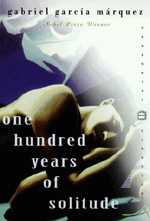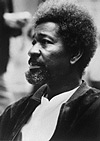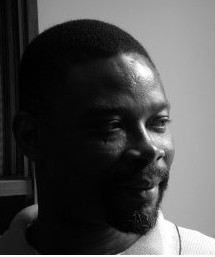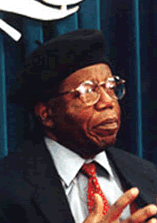On pages 25-6 and 209-10 of Animism: Respecting the Living World I refer to Harry Garuba's article, "Explorations in Animist Materialism: Notes on Reading/Writing African Literature, Culture, and Society," Public Culture 15(2): 261–85.
One of the largest gaps in my book is the absence of a chapter about the kind of novels and other literature that Garuba discusses. This gap is a significant fault because it is probable that animist worldviews and lifeways are better represented in imaginative rather than in other literatures. This page is intended to fill that gap.
| Return to animism homepage | |
| you
are here |
Animist Realism |
| Narrow Animism | |
| Panpsychism and Hylozoism | |
| Post-dualism | |
| More Ethnography | |
| Living it | |
| Animation and projection | |
| Wights and other persons | |
| Shamans and animists | |
| Darwin's animism | |
| Animist Manifesto |
|
|
Pictures of Soyinka, Morrison, Achebe and Osundare drawn from the websites that introduce them and their works ...
Those with access to Muse (which usually means having a university address) and Acrobat Reader should go to Public Culture and download the pdf version of Garuba's article now.
I'm not going to repeat all the detail of his argument here - never mind plagiarism, his article is just too important and interesting to reduce to a mere summary. If you aren't convinced to read the article by the fact that a full understanding of animism isn't possible without engaging with Garuba's argument, how about the fact that it is necessary to a full understanding of contemporary African societies, colonisation, post- and anti-colonialism ... oh, and most of the good books written recently ...? Well, ok, since you're still reading this site I ought to assume you're interested enough to read Garuba too. Perhaps you already have! OK, so let's walk on.
If you need to you can download Adobe's Acrobat Reader first:
 On
page 25 of my book I note that the descriptive part of Garuba's argument
makes considerable use of a passage in Gabriel García Márquez’s
One Hundred Years of Solitude. One of the things that's exciting
about this is that it can be read as a somewhat foolish mistaken attribution
of life to inanimate objects (in this case, magnets and the objects
attracted by them).
On
page 25 of my book I note that the descriptive part of Garuba's argument
makes considerable use of a passage in Gabriel García Márquez’s
One Hundred Years of Solitude. One of the things that's exciting
about this is that it can be read as a somewhat foolish mistaken attribution
of life to inanimate objects (in this case, magnets and the objects
attracted by them).
Isn't this just the kind of thing I'm arguing is NOT animism? It would be, but for the fact that this story is far more playful. It is possible that this is mere mistaken identity. But the action takes place in a magical cosmos. García Márquez’s book is a prime example of what other scholars have called "magical realism". Here's a link to a website devoted to "magical realism" that widens the debate.
(The term "magic realism" was coined in 1925 by Franz Roh, a German art critic, to refer to the way in which post-expressionist painting revealed the astonishing and mysterious wonder of the everyday world).
Garuba
does something far more interesting with this when he develops an argument
about "animist realism", especially with reference to West African literature.

Garuba discusses works by Wole Soyinka (especially his plays The Road and A Dance of the Forests - both published in Collected Plays, vol. 1; Oxford University Press, 1973 - you can read an extract c/o of Amazon),
Toni Morrison (Beloved: A Novel, Knopf, 1987),
Chinua Achebe (Morning Yet on Creation Day: Essays; Heinemann Educational, 1975),
and Niyi Osundare (Songs of the Market Place; New Horn, 1983; and Selected Poems; Heinemann International Literature and Textbooks, 1992).
Sorry, I do need to take time to add more creative discussions and links to additional authors and debates - especially novels and other works that imagine how the world really is ..
| but for now, do read Tom Robbins' Villa Incognito | |||
 |
Sparklingly brilliant - funny - irreverent - intelligent - anarchic I've no idea if what he says about southeast Asian animism is accurately ethnographic, but it is certainly provocative and great fun |
||
| In April 2005 Molly and I participated in the quinquennial congress of the International Association for the History of Religions in Tokyo. On a day off we visited several temples and shrines including, I think, the very one that Robbins mentions in his book (pp.222-3). So, here are, I think, the two tanuki statues he mentions, and some other members of the community there ... | |||
| two tanuki | water flowing for purification | ||
Jizo (the patron bodhisattva of children). Thanks
to Megan Hine for telling me about Jizo. |
Not a lost toy but an offering Now what intrigues me is the relationship between tanuki and Jizo |
||
Cherry
blossom time! just outside the shrine |
|||


